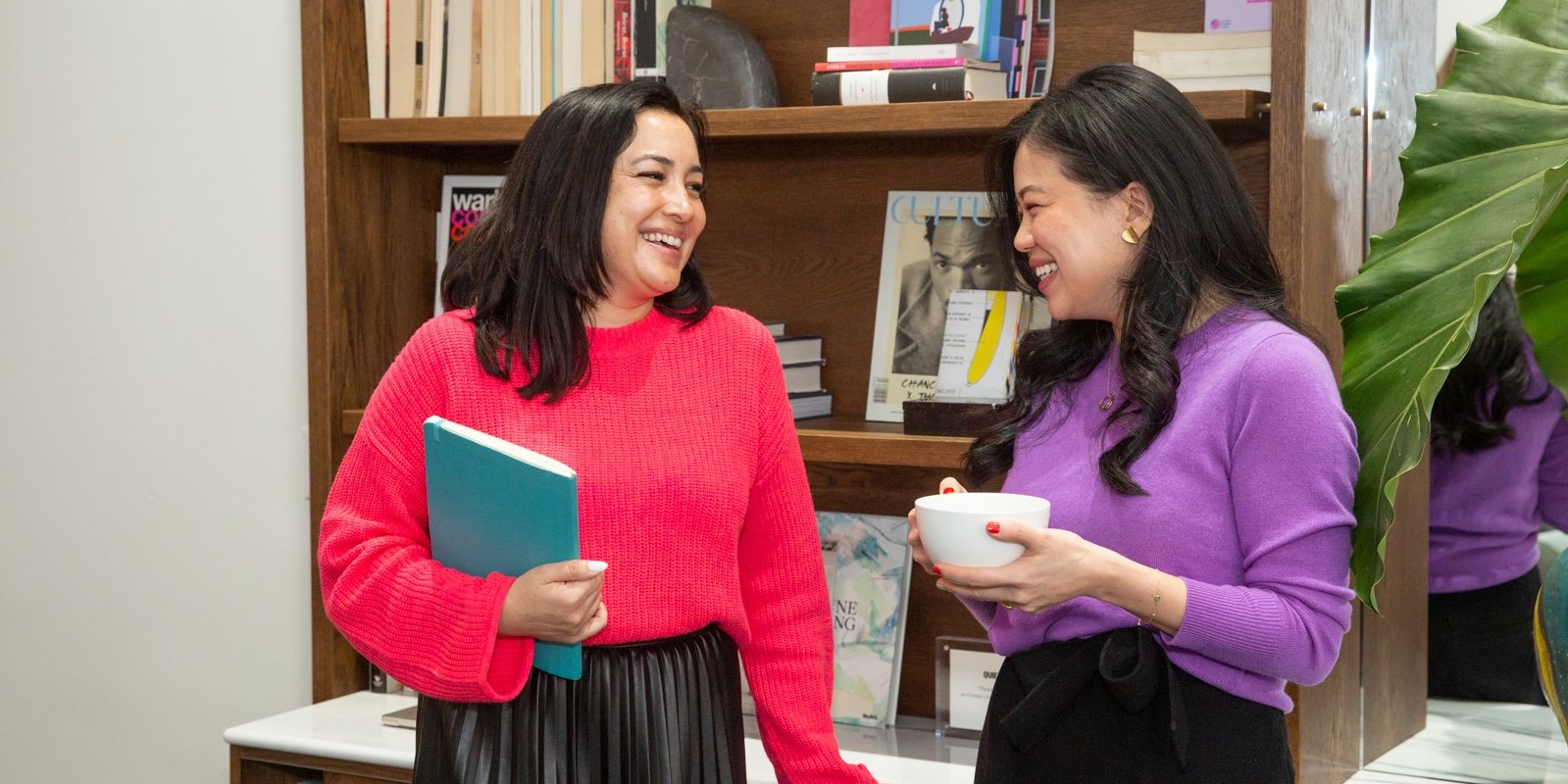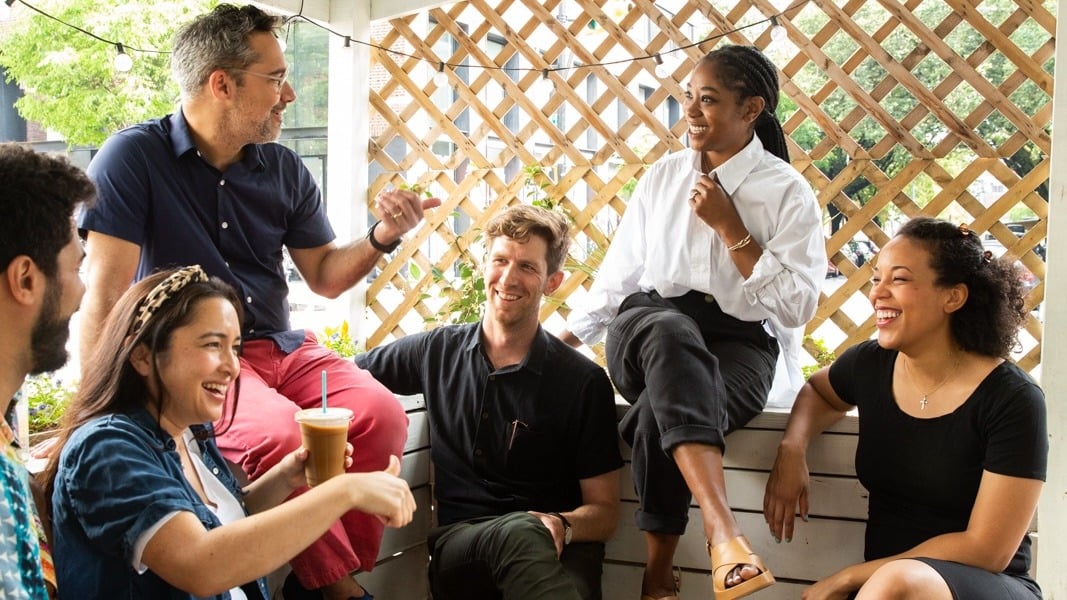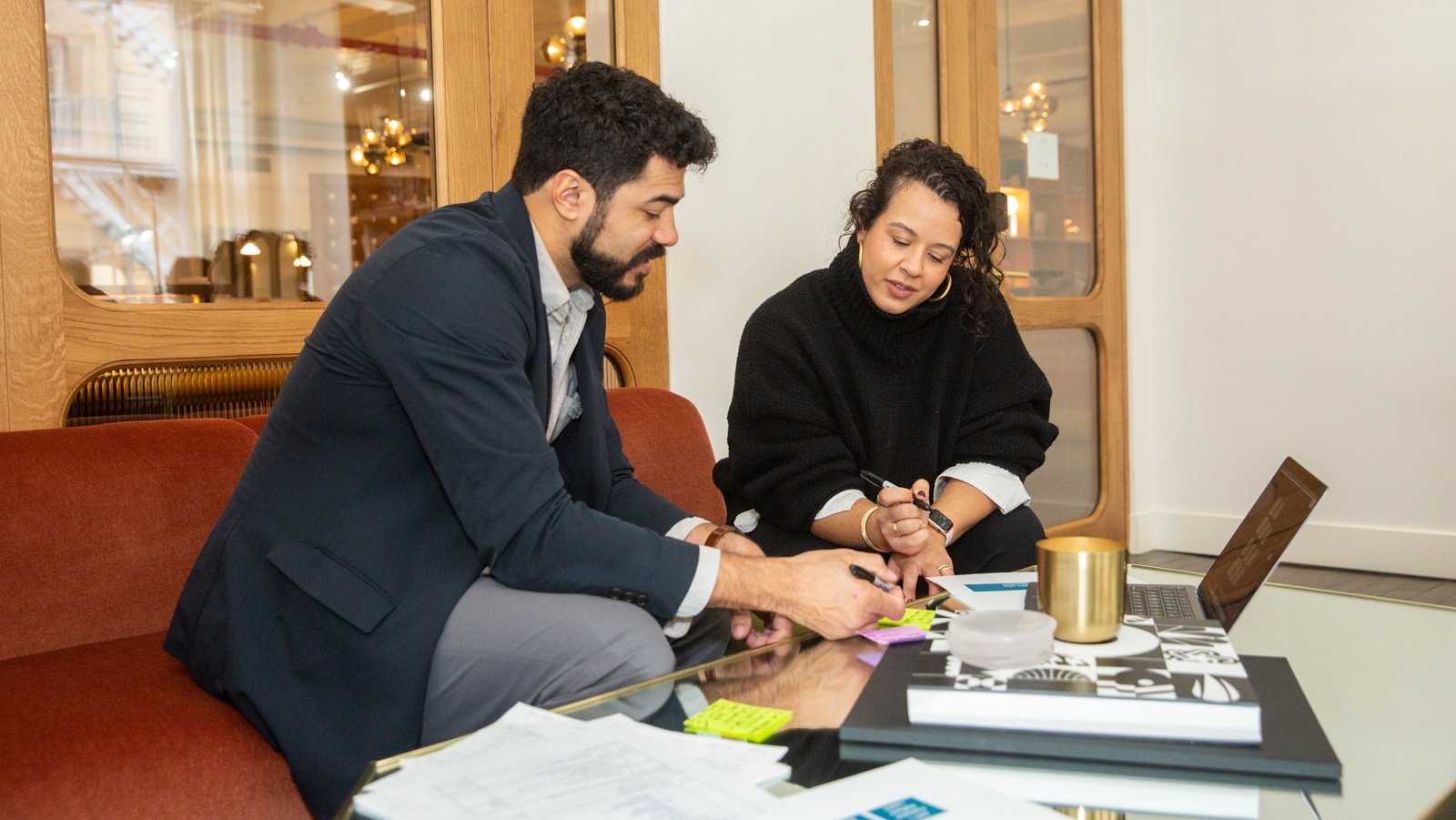Published September 9, 2016 | Updated August 3, 2023 | 18 minute read
How August is making diversity part of the foundation of our company
A caveat: If you need to be convinced that diversity is a good and worthwhile thing, go out and educate yourself and come back when you’re done. This is not for you.
This is for everyone who already cares about making workplaces more diverse. And this is especially for everyone who is part of an organization that is currently less diverse than it wants to be, and is looking for some ideas about how they might become more diverse.
Who we were when we started
August was founded by 2 White women and 3 White men. From the earliest conversations about what we wanted our team to become, we knew that diversity was important to us. But, it wasn’t until we started trying to hire people that our commitment to that intention was tested.
As a new business with big ambitions, hiring is essential to making the business work — especially in a people-based business like consulting. The amount of work we can sell and the impact we can have for our clients is directly dependent on the size of our team. Also, any entrepreneur will tell you that choosing the right people is one of the most important decisions you make. It’s easy, then, to default to the path of least resistance. Call up everyone you know, put the word out, and hopefully hire some people you already know and trust. And for a moment, this is what we did. We felt that it was out of necessity… and we already had some diversity. We thought we’ll get to that as soon as we can, we just need to hire one or two people first. Well — just like it always is — hiring was harder than we expected. We made some offers. Some people turned us down. And it turned out to be a blessing in disguise.
We needed to put more effort into attracting strong candidates. And this challenge gave us an opportunity to revisit our commitment to diversity. Knowing we had to take action to recruit new candidates, why shouldn’t we take action that would help to increase the diversity of our team, instead of maintaining what we’ve got or making us even less diverse?
We decided that now was actually the best time for us to do something about this. And knowing that in many ways this would be uncharted territory, we agreed to treat it as an experiment and see what we could learn. Worst case scenario would be that we fail to find any new candidates; we say something we regret and offend people we’re trying to attract; and we learn a painful but valuable lesson about how to do this. And best case scenario would be that we put ourselves on the radar of a more diverse network of potential talent; we meet a couple new people who might be able to connect us with candidates; and we learn something about how to do this.
Fortunately — so far, at least — our efforts have worked out beyond our wildest dreams. We still have so much more to learn, but we felt that now is a great time to pause, reflect, and share what we’ve learned so far.
3 tenets of improving diversity
1. The value of diversity compounds over time.
If you build a diverse team at the start, it gets easier and easier to be diverse as you grow, and you get to reap the benefits of that diversity along the way. If you put it off, however, thinking it’s something you’ll tackle later, it only gets harder. Just like they tell you about your 401k. If you start investing in your 401k early, the rewards multiply in your later years. And if you wait to invest, the harder it gets to catch up. Same goes for having a diverse team.
2. Your future diversity is directly impacted by your current diversity.
To the extent that you currently lack diversity, it’s harder to find people who are different than you. Finding different people is extra work. Our social networks — both virtual and IRL — are a reflection of ourselves. Everyone tends to know mostly other people like themselves. So, if your recruiting strategy is to tell your existing employees to “Go out and find more people like yourself!” …then that’s exactly what you’ll get. More sameness and less diversity. If you want to find people who are different than you, then you need to do the opposite and make a deliberate effort to seek out networks and communities beyond those you’re already a part of.
3. This stuff is hard to talk about; and if you want to fix it you have to talk about it.
The same thing that makes diversity so valuable is what makes addressing it so challenging. More perspectives, and more informed perspectives make your ideas, and how you express them, better. So, to the extent that you lackperspective on the topic of diversity, your ideas and how you express them are in danger of being misinformed, ignorant, offensive, or even bigoted.
On top of that, diversity is diverse. Some diversity is obvious, like gender and race. We can see our differences by looking at each other. But what about sexual orientation? What about the economic circumstances of a person’s family or upbringing? Some diversity is inherent, and some is acquired through experience. Both are important, but not the same. This means that some types of diversity are harder to address than others. Different types of diversity need to be respected in different ways.
And, still, you have to talk about it if you want to do something about it. Humility and some self-awareness about your own lack of perspective helps.
Starting
The first thing we did, on day zero, was to make sure that we had some gender diversity within our founding team. Having all recently left a company that — in spite of its generally wonderful culture — lacked diversity, and in particular lacked gender diversity among the most senior leaders, we were intent on giving August a better start. And this is not to imply that gender diversity is necessarily more important than every other kind of diversity, but it was the type of diversity that we were most acutely aware of at the time (our own biases ever present).
In thinking about how we talk about ourselves in public, we make a conscious effort to be inclusive. A small example: we ran the language on our careers page through Textio — software that analyzes potential bias in your language. It’s also common within August to run a Tweet or an email or a blog post by the team to check whether or not we might be saying something that might unintentionally offend someone. And we have a policy of not speaking at events or on panels that do not include women (we’ve even created a list of suggestions for conference organizers who need help). Best of all, our efforts to be inclusive get better by themselves as our team gets more diverse (see above, compounding diversity).
Listening
If there’s only one piece of advice you take away from this, it is:
Listen before you speak.
If you’re talking about or trying to understand someone’s perspective that’s different from your own, start by shutting up and listening as hard as you can to where they’re coming from. Listen longer and harder than you think you need to. Keep listening. And even as you begin to add your thoughts to the conversation, recognize that you will never fully know what it’s like to live someone else’s experience.
Get Out of Your Bubble
To both listen harder and to find networks and communities outside our own we did things to essentially turn up the volume on voices that represented those different perspectives. One way we did this was to build a Twitter listmade up of exclusively women, people of color, and people from the LGBTQ community who share overlapping interest in issues and topics broadly related to our work (i.e. the future of work, diversity in the workplace, business and technology, social change and social justice). We also frequently shared and discussed articles that helped broaden our perspective.
We reached out to people we did know, and friends of friends, to seek out the connectors in our existing network who had a more diverse perspective to share. We talked to them about our efforts to improve the diversity of our team. We listened. They acted as influencers and informal advisors who helped to steer us in better directions.
“Another Round” Podcast Sponsorship*
And — most significantly — we spent $9,000 to sponsor the brilliant podcast Another Round. The specifics of our contract with them, and the creative ads that they helped us create are located in our public drive.
*On the subject of podcast advertising… it is currently *way* undervalued in our humble opinion. The people who produce and sell podcast advertising have very limited methods for gathering the kind of listener demographic data that big advertisers value. This means that relatively small businesses like ours (and many of the startups you hear advertised) can afford to get in. We highly recommend podcasts as a recruiting tactic.
We arrived at this tactic for a couple of reasons. Years ago, a previous company we had worked at ran an ad on RadioLab, and we were blown away by how effective it was at surfacing great talent. So August had a well-informed hunch that podcasts are generally effective advertising for a company like ours, at least for talent (TBD on the client side…). Another Round is one of the most popular podcasts around, and it had popped up on our radar as we turned up the volume on more diverse voices. We listened to it weekly for a couple months, and it was clear that this was a perfect fit for us. First off the show is incredibly smart and insightful. The two hosts — both Black women — cover a wide range of issues affecting culture and society with infectious curiosity, passion, and joy. So, we reached out to BuzzFeed, the company behind the show, to see if it would be possible to purchase sponsorship.
When we decided to spend the $9,000 on the ad, we considered it an experiment. Even though it was a big chunk of cash for us to spend so early on in our business, $9,000 isn’t really that much to pay to find an awesome new team member who stays at our company for years and creates exponential value for the business through the work they do. But, even if we didn’t end up hiring anyone, it would be a great learning opportunity about what we might do to increase the diversity of the candidates in our talent pipeline, and hopefully we’d at least get a couple inquiries and maybe meet a couple interesting people.
Once the ads starting playing, it became instantly clear that this was going to be way more successful than we had hoped. After the first week the overall number of candidates reaching out to us multiplied by nearly 10. And, even better, the overall quality of the candidates — in terms of their background, experience, qualifications — was better than what we had been seeing before.
Anecdotally, it was immediately apparent that targeting the Another Round audience had the desired impact of increasing the diversity of candidates in our pipeline. But, in considering how we would quantify and share how well it worked, and what we learned, we ran into another problem: How do you measure diversity?
Measuring Diversity
As mentioned above, this stuff is hard to talk about. If we just reported our own assumptions about people’s diversity it would be subject to all of our own biases and misinformed due to our lack of diversity. But, how do you ask people about their diversity? This is highly personal and tricky stuff to ask people about — especially people you don’t know well, or people who applied to join our team.
We decided that the way to collect the most legitimate data would be to ask people to complete a survey in which they could self-identify, anonymously, and share whatever information they felt comfortable with. This just left us with how to write that survey… and how to ask people to fill it out.
Our Diversity Survey
We wrote several iterations and drafts of the questions, the answer format, and how it would be introduced. We tested it on ourselves first, and reflected on the challenges and questions it raised for each of us. Next we sent it out to a small sample of candidates, to gauge whether we would get any response and to see if we might elicit any concerns or negative reactions. The initial test seemed promising. Finally, we took the plunge and sent it out to all candidates who had applied to join our team so far, approximately 100 people total. We sent out two separate instances of the survey, one to people who had reached out to us through our general inquiry page, and another instance of the same survey to people who had found us through Another Round. By separating the two groups, we would be able to quantify the impact of the Another Round sponsorship on the diversity of the talent in our pipeline.
Here is a copy of the actual survey we used — https://augustpublic.typeform.com/to/od4oc5
One risk to this whole approach was that we would need at least about 1/3 of people to respond to give us some legitimate signal on our subjective self-assessment of people’s diversity. If no one responded, all the time we spent putting it together would be wasted. But, we embraced our learning mindset, did everything we could to maximize our chances, and shipped the survey.
Fortunately we got a strong response, almost 50% of people we sent it to completed the survey. Thank you, thank you, thank you to everyone who filled it out! It was gratifying to discover that so many people cared enough about this to take the time to do the survey. Also, the results affirmed many of our assumptions. And now we are able to share the actual data instead of just asking you to take our word for it.
The Numbers
All responses were optional, and respondents could write in any response they wanted. It was important to us that people use whatever terms or language they felt best represented themselves.
We conducted 3 different versions of the same survey, so that we could compare the data.


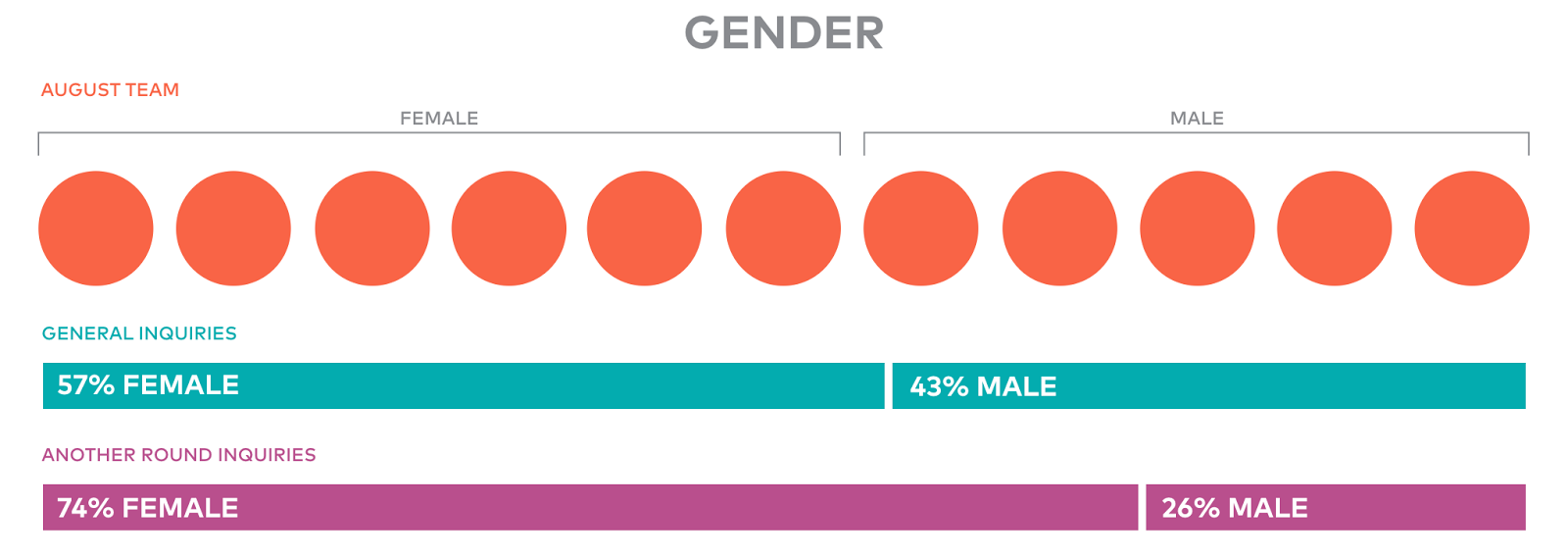
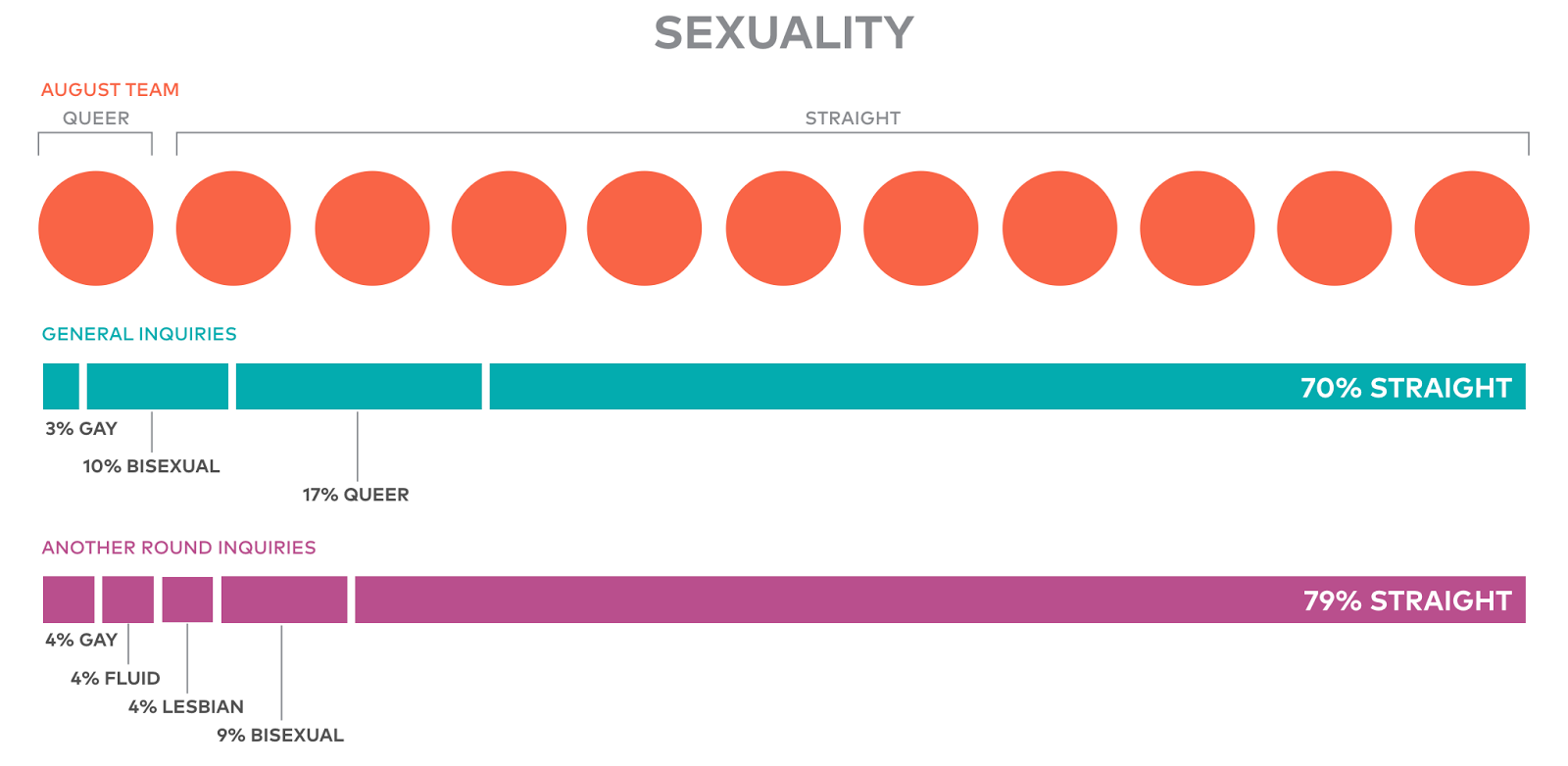
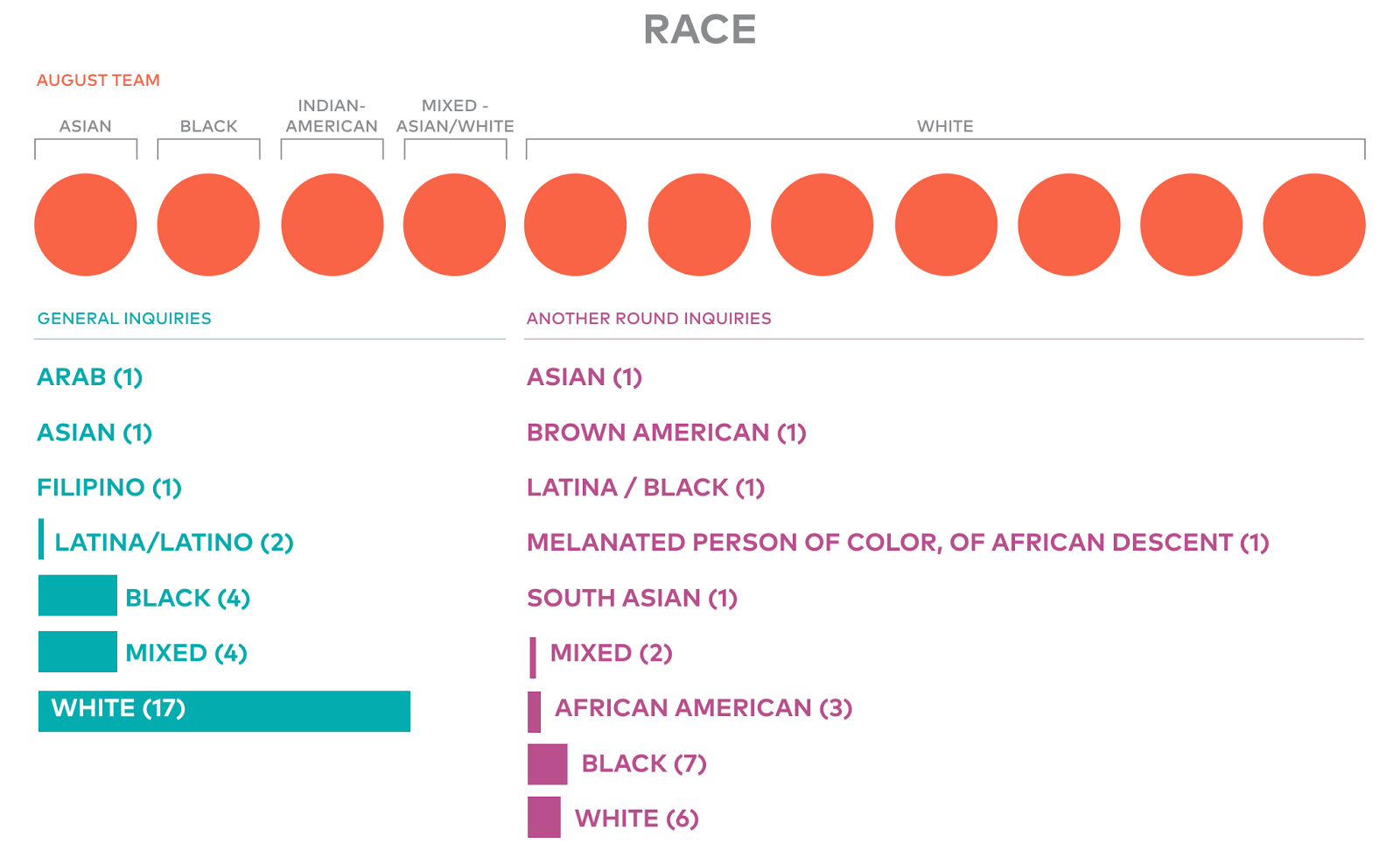
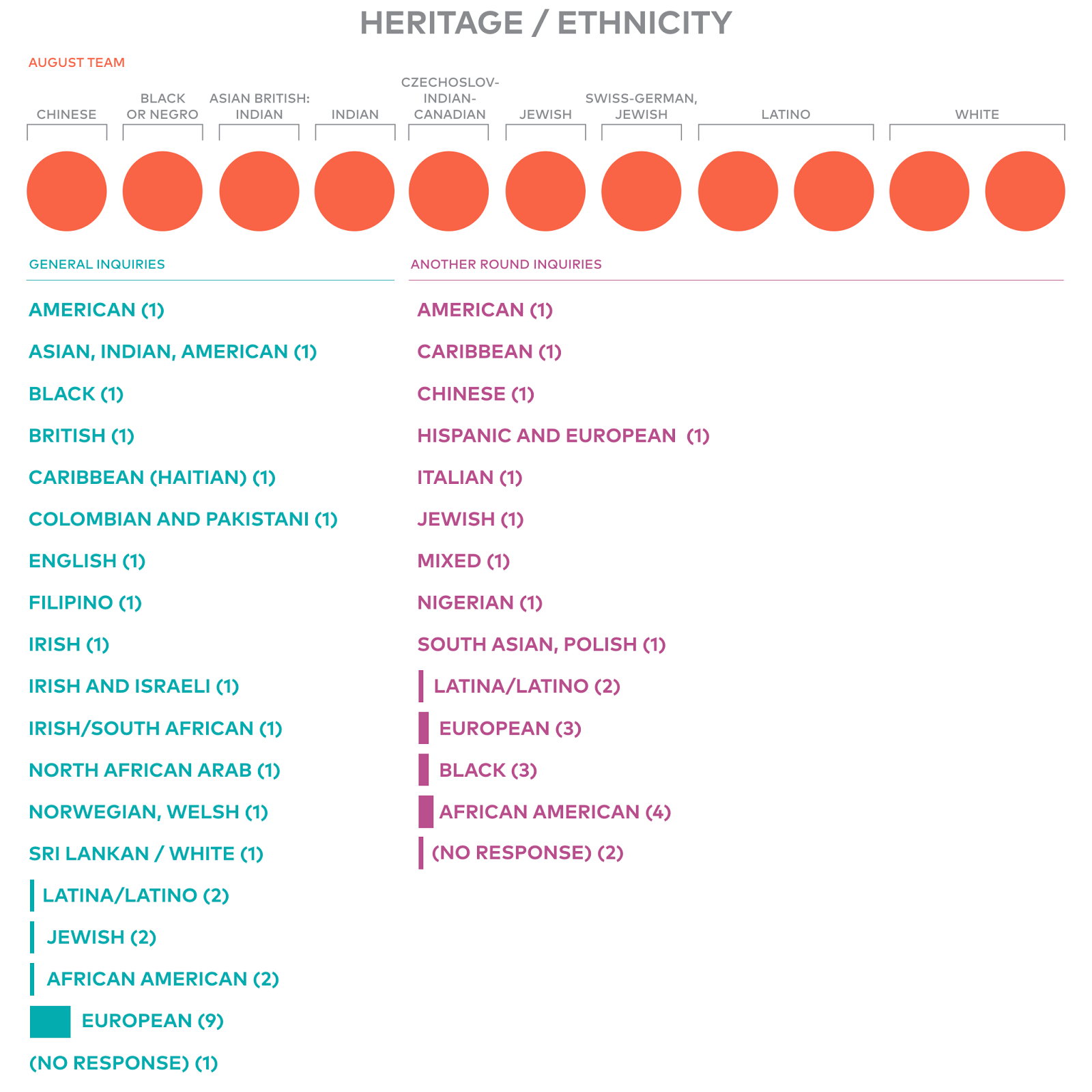
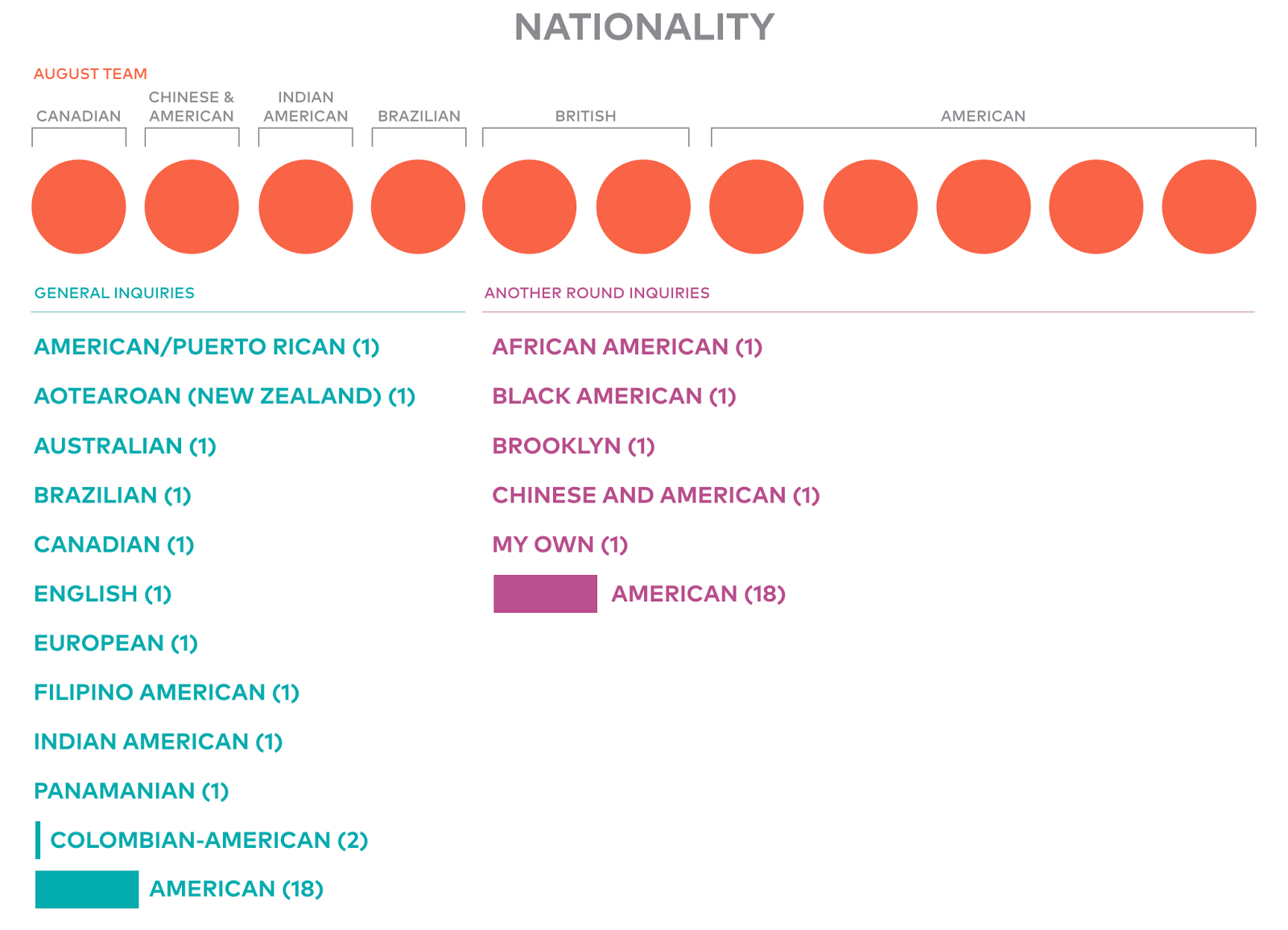
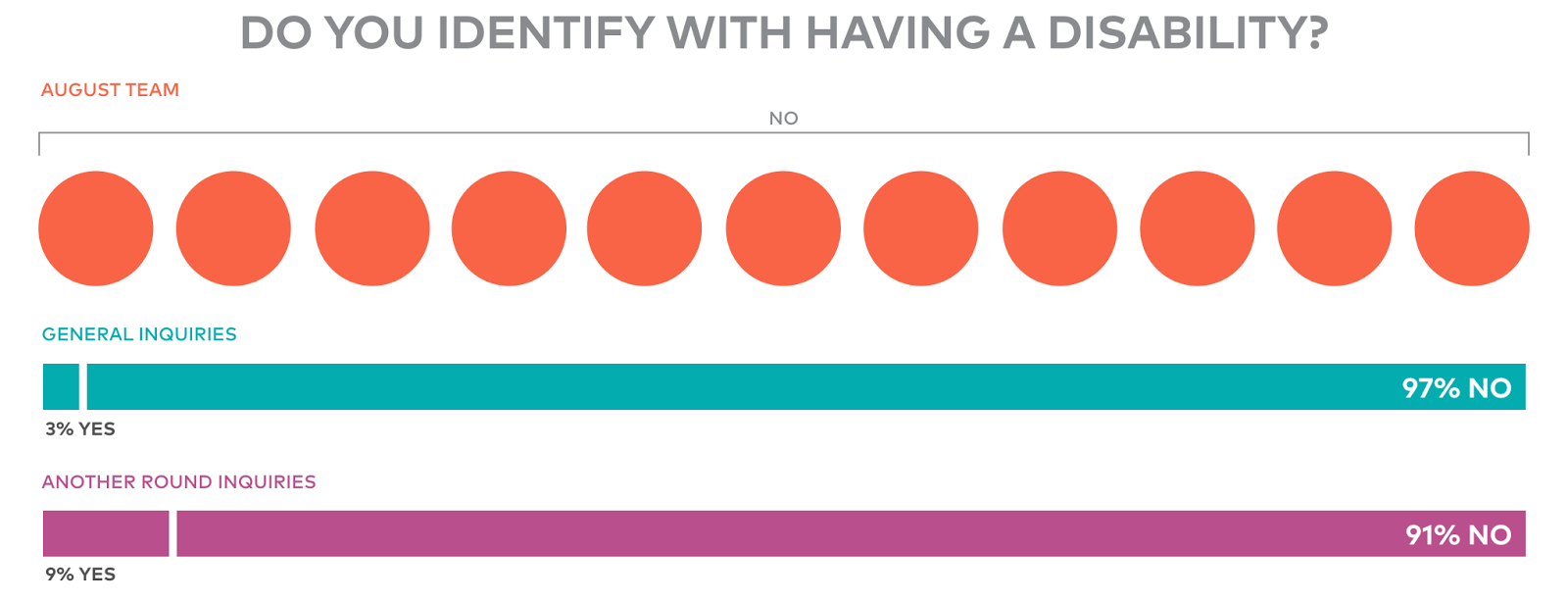
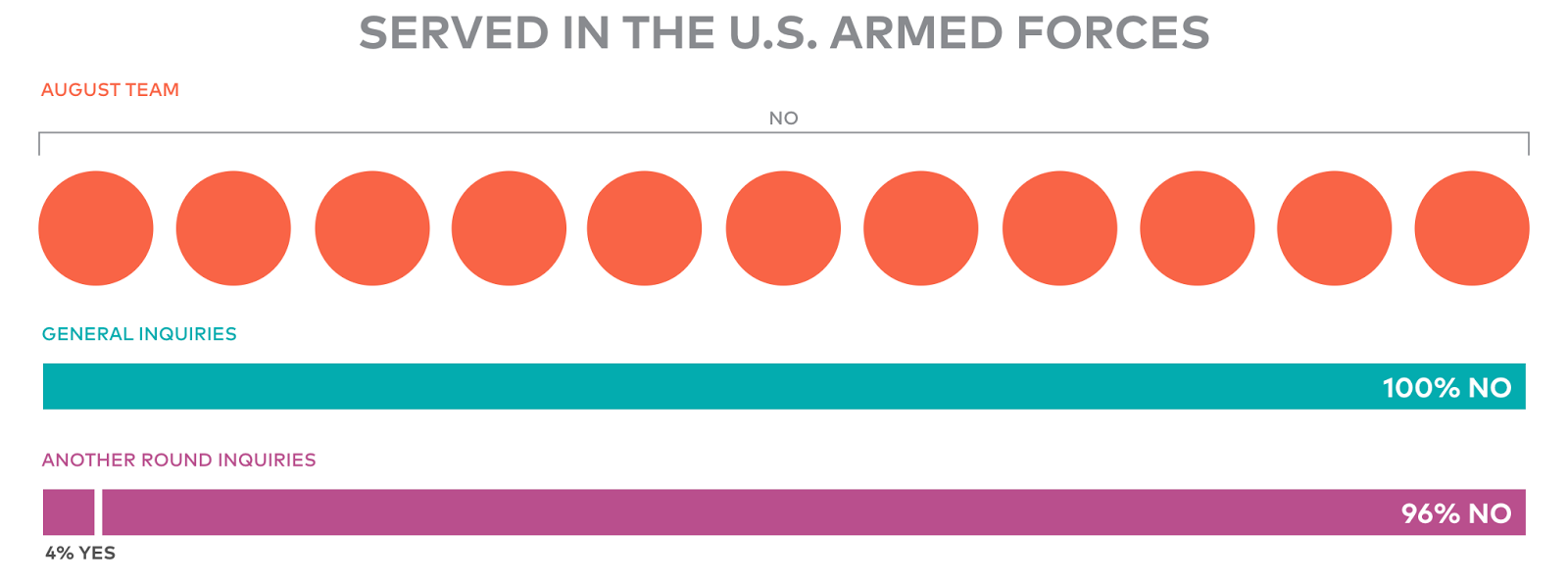
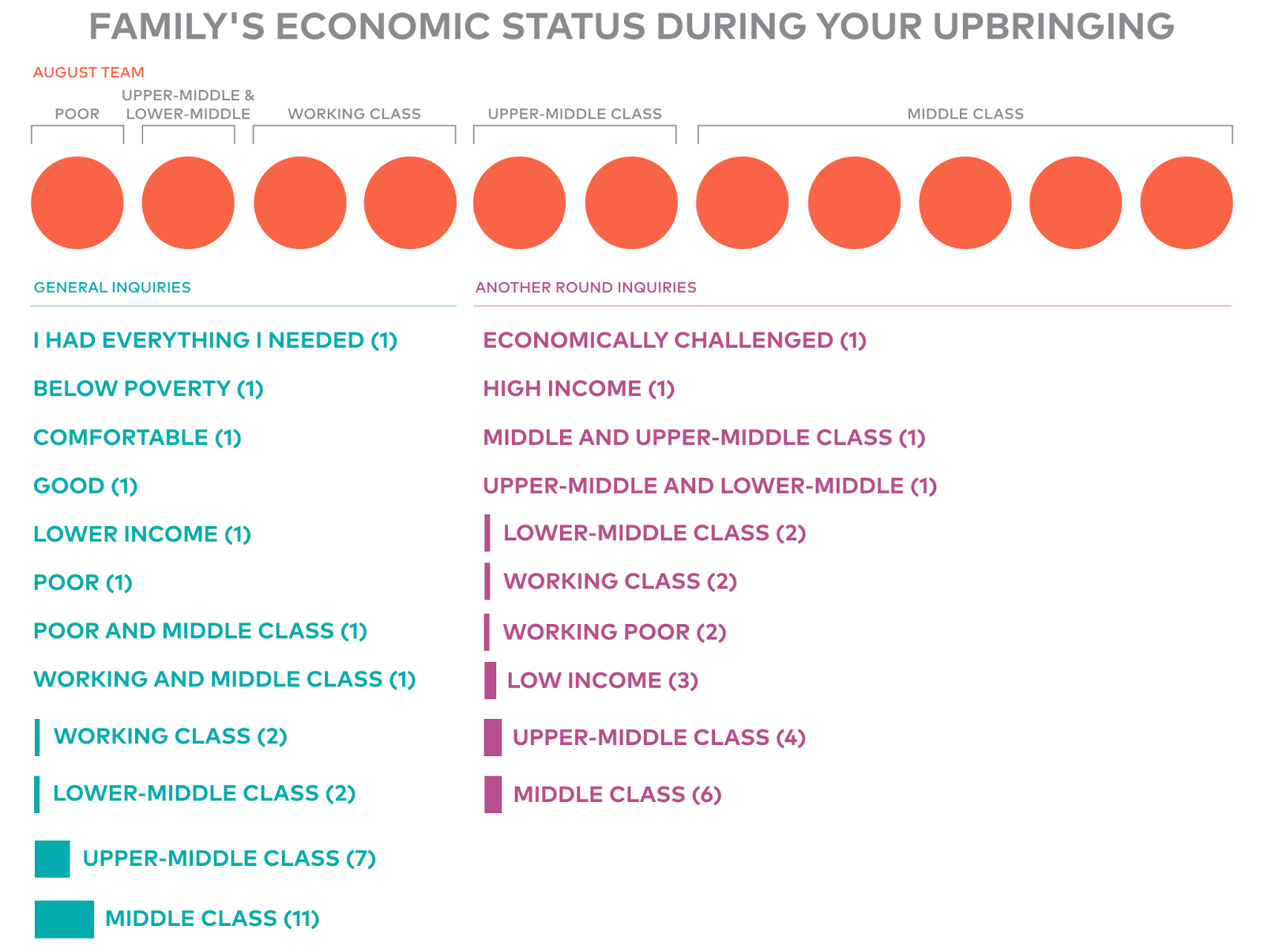
What’s next?
Keep going. More.
We will be recruiting and adding external members to our corporate board. This has not made it to the top of our list of priorities in our first year, but is high on our to-do list for the year ahead. Diversity needs to start at the top, and we expect our board to set the example for what the rest of the organization will be.
We’re still a small and growing company. And while we’re happy with how we’ve grown our team so far, we’re still far from our aspirations.
In a way, our goal is to make the diversity within our team unremarkable. Meaning that inside our company it will be unremarkable to be a woman, to be a person of color, to be queer, to have a different nationality, to have a disability, to come from an economically disadvantaged background, to have served in the Military, or any number of other things that make us different. Within our team no one will feel more “other” than anyone else. And, certainly, sometimes in some contexts it will still matter a lot — and be valuable — to be able to represent a different and unique perspective. But, the real beauty of making difference unremarkable is that it creates the opportunity for each person to be more than their difference. That each team member can be themselves, their whole selves. And that’s when you start to realize the full promise of diversity.
Every part of this experience has reinforced that this is exactly what we should be doing. Our team is fantastic. And different in all kinds of great ways. And most of all, it’s been incredible to witness the honesty and bravery that people have brought to this conversation. (For a glimpse of that, go read this wonderful essay by team member Qing Qing Chen.)
We will continue to share our efforts and lessons learned. If you’d like to talk to us more about this, please get in touch: team@aug.co. And if you are taking similar steps at your organization, we encourage you to share your story (and data) so that we can all learn together.

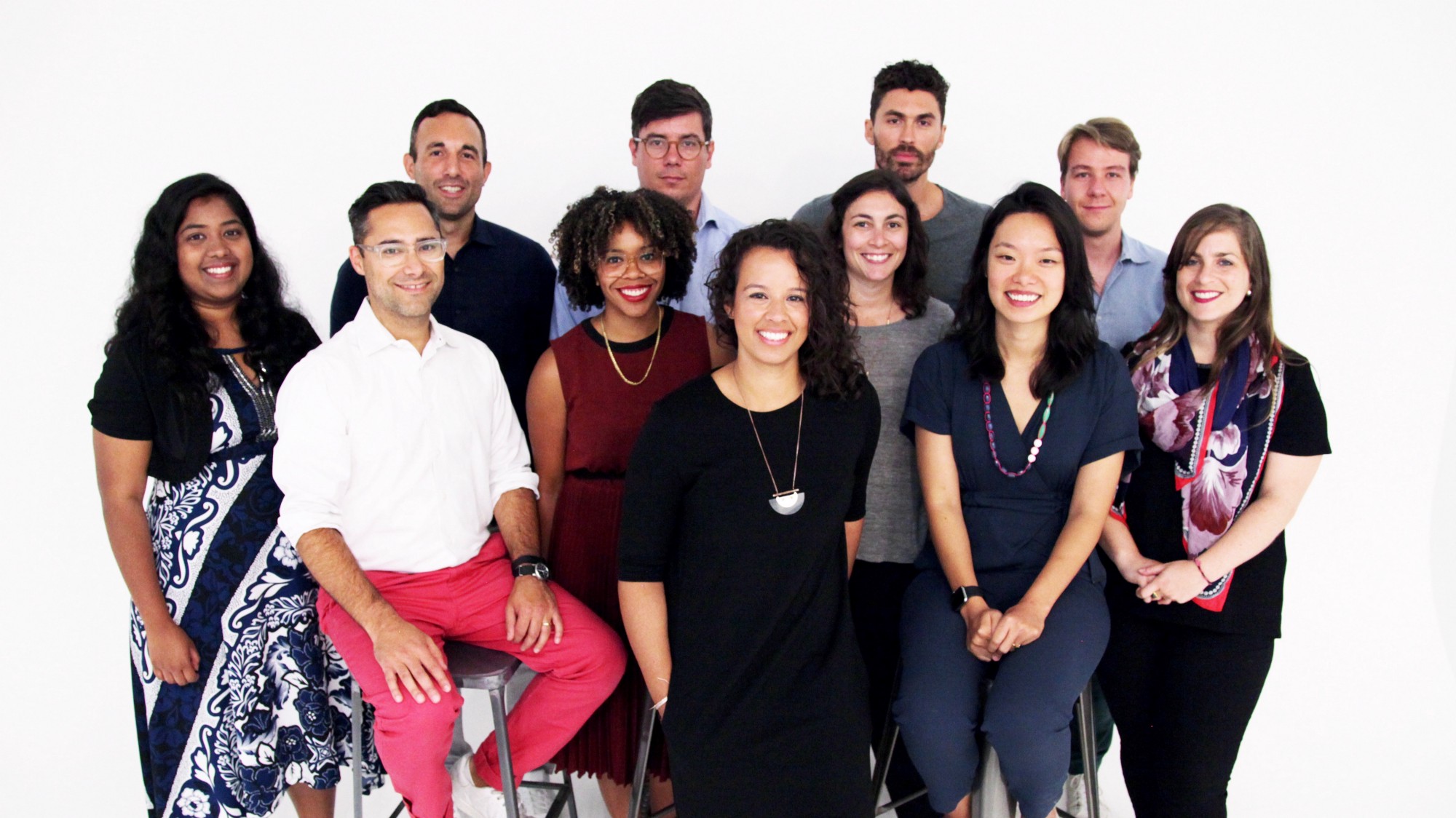
.jpg)




